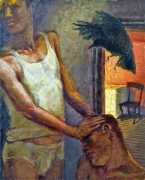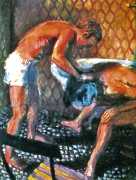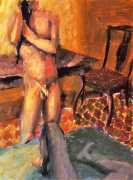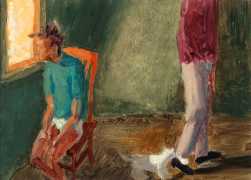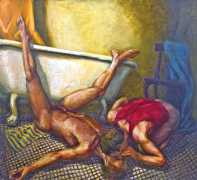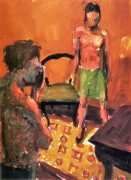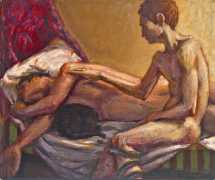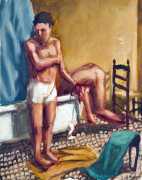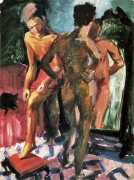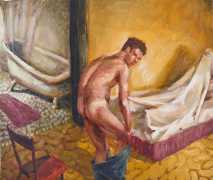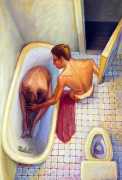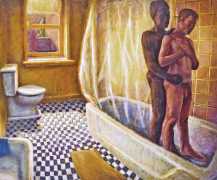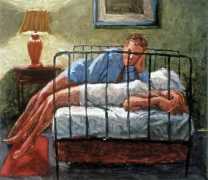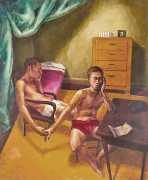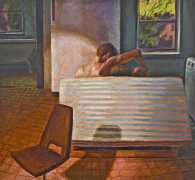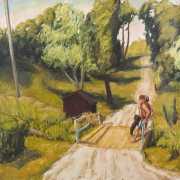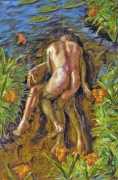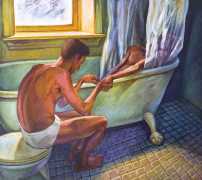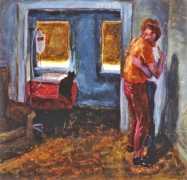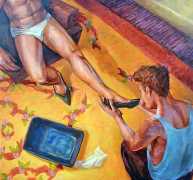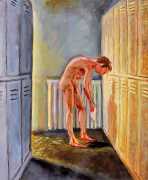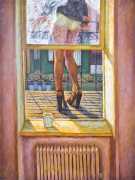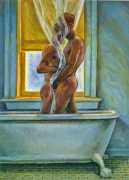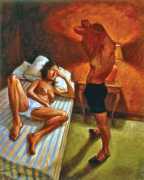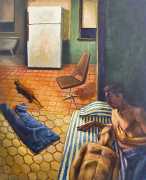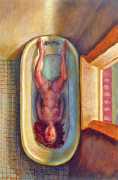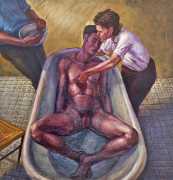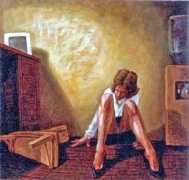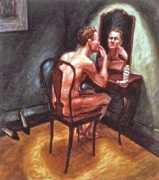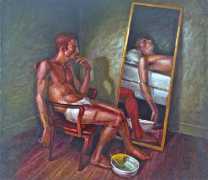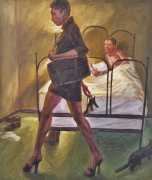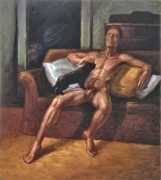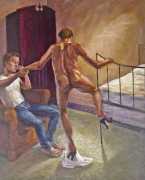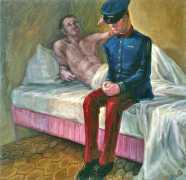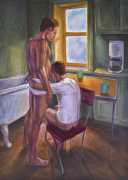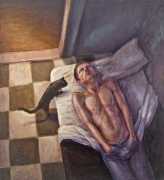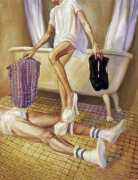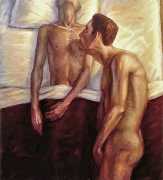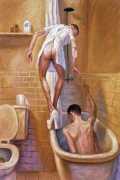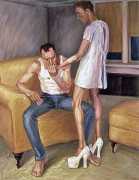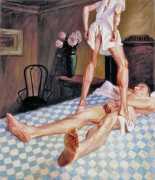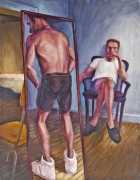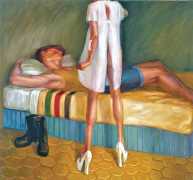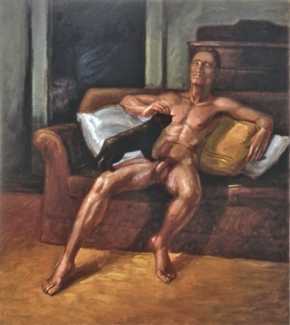 Dedicated to capturing that ‘soft glow of brutality’, Steers’ compositions communicate joy even in the face of despair. At the same time, by painting mundane moments imbued with a disconcerting charge, his paintings invite ambiguous narratives of mortality, defiance, and compassion. For Steers, such narratives reflected his own desires. As he explained, ‘I would like to be able to act or have someone care about me the way some of the people in my paintings act or care about each other. It’s as if painting it will make it become real.’
Dedicated to capturing that ‘soft glow of brutality’, Steers’ compositions communicate joy even in the face of despair. At the same time, by painting mundane moments imbued with a disconcerting charge, his paintings invite ambiguous narratives of mortality, defiance, and compassion. For Steers, such narratives reflected his own desires. As he explained, ‘I would like to be able to act or have someone care about me the way some of the people in my paintings act or care about each other. It’s as if painting it will make it become real.’
Transforming prosaic scenes and spaces into tableaux suffused with longing, loneliness, fear and eroticism, Steers’ work inhabits a melancholy architecture of intense emotion. His images – sensuous and unsettling – have an important place in an art landscape informed by a return to figuration in the 1980s and early 1990s.
We show his paintings here in chronological order, from happy domestic gay encounters to the growing threat of AIDS. In the last paintings from 1994 we experience the artist’s alter ego, in white chemise and high heels, gently leave the proceedings.


